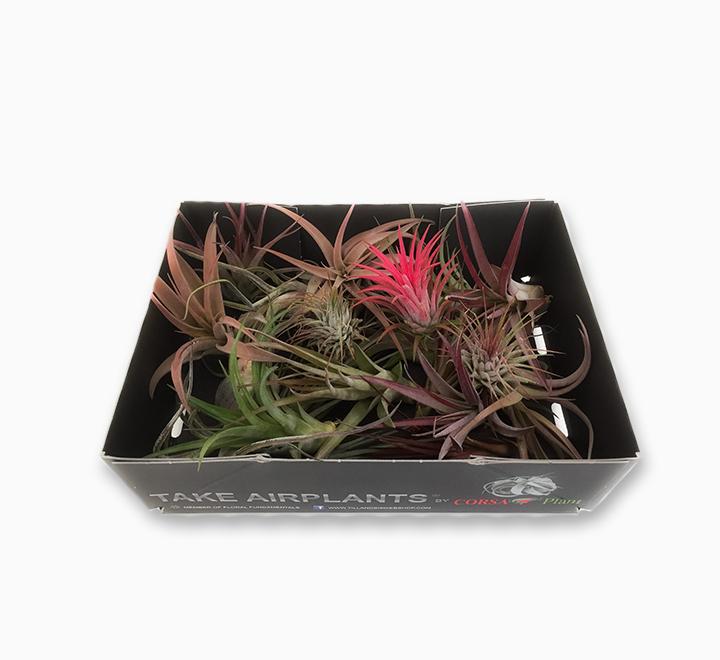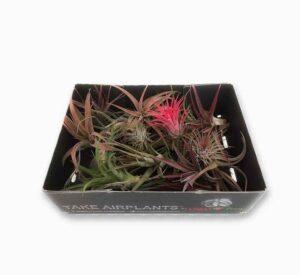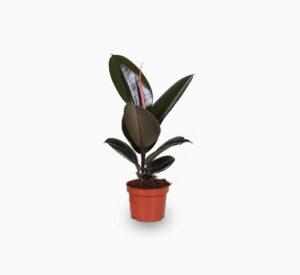Air Plants Assorted 4-10cm
Air Plant Tillandsia mix
The Tillandsia truly are beauty of an air plants.
It features lovely tendrils that are a gorgeous shade of deep green that appear to move and wave as you admire it. The Tillandsia Bulbosa is a beautiful addition to any home or office. Some have said that it resemble a sea creature with its smooth, long arms. I recall the stories of Medusa, from Greek mythology and her wild hair full of snakes. Its leaves are flat and form a fun bulbous shape at its base, and wind out to its long outstretched arms. Its base leaves are often highlighted with a lovely shade of plum and will produce a bright red bloom and brights violet petals when it flowers.
After the Bulbosa has flowered, it will produce plant babies called Pups. Pups should not be removed until it is half to two-thirds the size of its mother.
Mentioned price is per plant. If you want a specific air plant, kindly mention in customer notes to provide pictures before delivery so you can choose.
CARE
- Use a spray bottle or plant mister to spray air plants with water every day or two. place the damp air plant on a towel to dry for a few hours. This is the best method of watering air plants as it really allows the water to soak into the plants. To water air plants this way, fill a bowl or sink with water and float the air plants in the water for 20 minutes to an hour every week. Then, take the plants out of the water, tip them upside down so any excess water can drain away, and then place them on a towel to dry before putting them back on display.
- Do not use distilled water. If using tap water, allow it to sit at room temperature for 24 hours for the chlorine to dissipate.
- Spring water or rain water is the best choice. You can also use aquarium or pond water to water air plants as it contains several dissolved nutrients, but do not apply any other fertilizers if you water with aquarium or pond water.
- If any leaves at the base of the plant die, simply pull them off with your fingers or cut them off with a sharp pair of plant grooming shears.
- If any leaves turn brown at the tips, cut the brown, dead growth off with the grooming shears. Do it at an angle, so the trimmed leaf blends in with the healthy ones.
- Keep air plants away from both cold and hot drafts that dry them out. The ideal temperature for air plants is between 50 and 90 degrees F.
Deliverable
- Healthy plant in its pot with premium soil
- All the tips and tricks for expert-level care
- Safe arrival guaranteed
Reasons to buy from us
- Guaranteed quality
- Careful handling
- On time delivery
- Support 24/7
- Telephone support
- Live chat support
- Trained staff
Related Product: Agrofish Natural Organic Fertilizer Pellet
د.إ29.00 د.إ46.00
Air Plants Assorted: A Vibrant Mix of Tillandsia Beauties
Introduction
Welcome to the world of air plants, where nature’s wonders defy conventional gardening norms. In this article, we will delve into the captivating realm of assorted air plants, specifically focusing on the fascinating Tillandsia mix. From their unique characteristics to care tips and creative display ideas, this guide is your key to becoming a successful air plant enthusiast.
What Are Air Plants?
Understanding Tillandsia
Air plants, scientifically known as Tillandsia, are a diverse group of epiphytes, meaning they grow without the need for soil. These enchanting plants belong to the Bromeliaceae family and are renowned for their ability to thrive in various environments.
The Beauty of Assorted Air Plants
A Kaleidoscope of Colors
One of the most captivating aspects of air plants is their assorted varieties, each boasting its own distinctive charm. From vibrant greens to shades of red and purple, Tillandsia mix offers a visual treat like no other.
Unique Shapes and Sizes
Discover the diversity in shapes and sizes among assorted air plants. Some resemble delicate flowers, while others take on intricate geometric forms. This assortment ensures there’s a Tillandsia for every aesthetic preference.
Caring for Your Air Plants
Light Requirements
Air plants thrive on light, but how much is just right? We’ll discuss the ideal lighting conditions to keep your Tillandsia healthy and vibrant.
Watering Techniques
The art of watering air plants can be a mystery for beginners. Learn about the crucial aspects of hydration, including soaking, misting, and drying.
Temperature and Humidity
Understanding the preferred climate for your Tillandsia is essential for its well-being. We’ll explore temperature and humidity guidelines to ensure your plants flourish.
Creative Display Ideas
Hanging Gardens
Elevate your air plant game with imaginative hanging displays. We’ll provide step-by-step instructions and creative ideas to bring your vertical garden to life.
Terrarium Magic
Discover the enchanting world of air plant terrariums. From glass orbs to vintage containers, we’ll guide you through crafting your mini ecosystem.
Troubleshooting Common Issues
Dealing with Yellowing Leaves
Yellowing leaves can be a common concern. Learn the causes and remedies to maintain your air plant’s vitality.
Handling Pests
Air plants are resilient, but pests can be a nuisance. We’ll identify common pests and effective methods to keep your plants pest-free.
Conclusion
In this journey through the realm of air plants, we’ve explored the wonders of assorted Tillandsia mix. Their vibrant colors, unique shapes, and ease of care make them an ideal addition to any indoor garden. Whether you’re a seasoned enthusiast or just starting, air plants offer endless possibilities for creativity and enjoyment.
Related Product: Agrofish Natural Organic Fertilizer Pellet
FAQs (Frequently Asked Questions)
- Can air plants survive without soil? Absolutely! Air plants, or Tillandsia, thrive without soil, drawing nutrients and moisture from the air.
- How often should I water my air plants? The watering frequency depends on the environment and climate. Generally, misting or soaking once a week is a good starting point.
- Can I grow air plants outdoors? Yes, you can. However, ensure they are protected from harsh sunlight and extreme weather conditions.
- What is the lifespan of air plants? With proper care, air plants can live for several years and even produce offspring called “pups.”
- Are air plants suitable for beginners? Absolutely! Air plants are known for their resilience and low-maintenance care requirements, making them a great choice for beginners.






